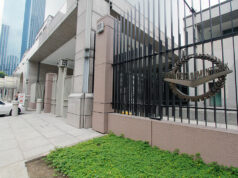Philippines stays in SE Asian manufacturers’ lead
By Elijah Joseph C. Tubayan
Reporter
THE PHILIPPINES’ manufacturing performance bested those of Association of Southeast Asian Nations (ASEAN) counterparts for the third straight month in December, according to a monthly survey conducted by IHS Markit for Nikkei, Inc.
The country’s seasonally adjusted Nikkei Philippines Manufacturing Purchasing Managers’ Index (PMI) topped the regional average of 49.9 in December, logging 54.2 that month that signaled “solid increase” from November, which nevertheless recorded a slightly higher 54.8.
The Philippines was followed by Vietnam’s 52.5 that signaled a “modest increase” from November’s 51.4, while Myanmar placed third with 51.1 though slower than the preceding month’s 51.6 reading. Thailand came fourth just above the “no change” line of 50, standing at 50.4.
A PMI reading above 50 suggests improvement in operating conditions from the preceding month, while a score below that signals deterioration. The manufacturing PMI is composed of five sub-indices, with new orders having the biggest weight at 30%, followed by output (25%), employment (20%), suppliers’ delivery times (15%) and stocks of purchases (10%).
Malaysia, Indonesia, and Singapore were below the 50 threshold at 49.9, 49.3, and 44.7, respectively, signaling “marginal” to “sharp” decreases.
The report said client demand “softened” across the region, making manufacturers reduce purchasing.
The report quoted IHS Markit Principal Economist Bernard Aw as saying: “The Nikkei survey data showed that output growth slowed and new orders failed to expand for the first time in five months.”
“There was little support from external markets either, as export sales fell at the end of the year,” he added.
“Other survey indicators suggest that the ASEAN manufacturing sector is likely to have a disappointing start to 2018. Firms scaled down buying activity and continued to cut back on their inventory levels.”
The report added that “there were few signs” that inflation pressures would ebb.
It noted that Myanmar posted the fastest overall rise in prices, followed by Vietnam and the Philippines. Philippine inflation clocked 3.3% in November and the central bank sees December’s pace — scheduled to be reported on Friday — at 2.9%-3.6%.
“Weak manufacturing conditions were accompanied by strong cost pressures, which continued to squeeze profit margins as firms’ pricing powers remained limited amid weak demand,” said Mr. Aw.
“A bright spot… was a further improvement in business confidence about the 12-month outlook. The Future Output Index rose to the highest level since March.”
Sought for comment, Land Bank of the Philippines Market Economist Guian Angelo S. Dumalagan said that the government’s increasing public spending this year should support the expansion of the country’s manufacturing, as well as boost investor optimism.
“This solid growth is expected to persist in 2018, as overall economic activity could accelerate further amid the government’s ambitious infrastructure program and tax reform,” Mr. Dumalagan said in an e-mail yesterday.
“Based on the crossborder investment database of Bureau Van Dijk, foreign companies have announced or are expected to announce at least 24 projects in the country’s manufacturing sector as of December 2017,” he said, referring to the Moody’s Analytics company that publishes business information.
“The funds for these projects mainly come from Japan, China, and some European countries. The pipeline of foreign investments in the Philippine manufacturing sector suggests that investors have confidence in the country’s growth trajectory.”




